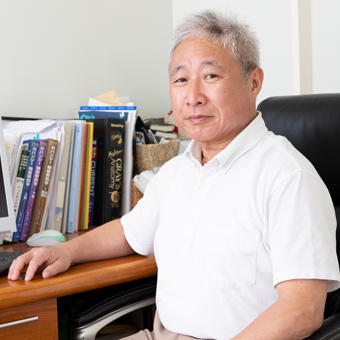- 日本語
- English

Now I’m starting a new type clinic at Meguro in Japan.
I have acquired a kind of technical confidence in Arthro-Kinematic Approach(AKA).
In 1927, Thomas Walmsley advanced the theory that AKA was the field of investigation for intra-articular movements. In 1949, Mennell introduced through the investigation of arthrokinematic approach involving the voluntary movements on full range motion; this movement named the accessory motion distributed the main factors of the concomitant movement of the joint.
Hakata Method is the method to treat abnormalities of the intra-articular movements such as joint play, rolling, sliding, and spinning of the joint surface. The most important characteristic of Hakata method is that it is restricted to treat synovial joints including spinal facet joint, sacroiliac joint, costovertebral joint, and sternocostal joint.
AKA is the method to treat abnormalities of inner joint movements such as joint play, to guide sliding of joint surface accompanying bone movement, on the basis of arthrokinematics (the research of joint movement) and articular neurology (the study of joint nerves).
In life, the voluntary movements cannot be achieved unless certain well-defined movements of joint play are present. Movements of joint play are independent of the action of the voluntary muscles. There are three inner joint movements such as rolling, sliding, and spinning on the joint surfaces.
Dysfunction, that is the impaired joint play, may restrict the voluntary movements and induce abnormal sensations like pain, swelling, weakness, including numbness around the joint and/or some remote parts of body.
The sacroiliac joint located at the pelvis is most important joint and can affect every part of the body, including joint pain, some sensory disturbances of sight, touch, hearing, and/or autonomic changes.
REHAB TSUCHIDA
After evaluation, we treat several joints by AKA.
| Surgery hours | Weekdays, Saturday Am9:00〜12:30、Pm14:00〜18:00 ※Closed on Wednesday Sunday’s, Holidays. Free clinic, appointment |
| Station | JR Meguro Station Tokyu Toyoko Line Yu-tenji Station Tokyu Meguro Line Fudomae Station |